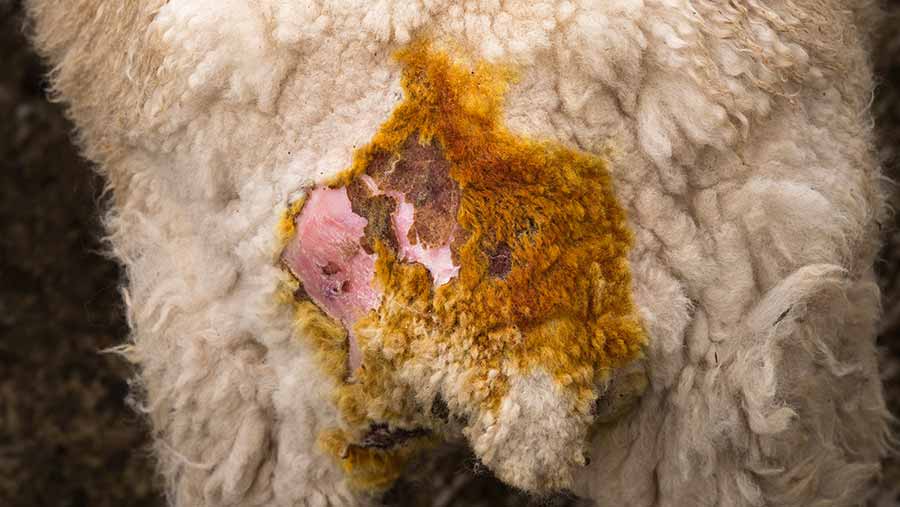Fly strike warning as warm, wet weather continues
 © Tim Scrivener
© Tim Scrivener Fly strike cases in sheep are increasing rapidly after warmer- and wetter-than-average weather in many parts of the UK created ideal conditions for blowfly and other parasites to thrive.
An online map, sponsored by Elanco, which automatically updates fly strike incidents, is showing new cases daily.
Although nowhere on the map is shown as red (high risk), a huge swathe of the country – from the south coast of England to the tip of Aberdeenshire – is now on amber alert after recorded cases.
See also: Health experts launch new aids for parasite control
Signs of fly strike, from early to severe
- Irritation
- Nibbling at tail head
- Increased tail movement
- Rubbing and discomfort
- Discoloured/damp fleece
- Fleece loss
- Sick animals
- Separation from flock
- Death (due to septicaemia, secondary bacterial infection and release of toxins)
The National Animal Disease Information Service (Nadis) has also highlighted blowfly strike in its latest monthly bulletin, warning farmers to be vigilant.
The Nadis bulletin said average temperatures were up by as much as 2C compared with the normal seasonal level and rainfall in many regions was up by almost 20%.
It warned sheep farmers to look for the signs of fly strike as the peak for cases through June and July continued to be fuelled by the weather.
Wet fleeces, dirty back ends and lesions such as foot-rot all create perfect conditions for the green bottle fly to lay its eggs, says Nadis.
The hatched maggots then attack any open wounds, causing injury and infection.
Nadis has recommended a comprehensive prevention strategy should be put in place where farms are at risk.
Prevention strategy
- Apply preventative product after consulting the farm vet
- Reduce dirty back ends with dagging, crutching and shearing
- Control worm and parasite burdens to improve general health and reduce dirty fleeces
- Treat lame sheep to protect open wounds
- Manage the fly population using traps, which have shown to cut strike incidence by 80%
- Dispose of deadstock promptly
- Consider grazing more exposed pastures that attract fewer flies in high-risk areas
